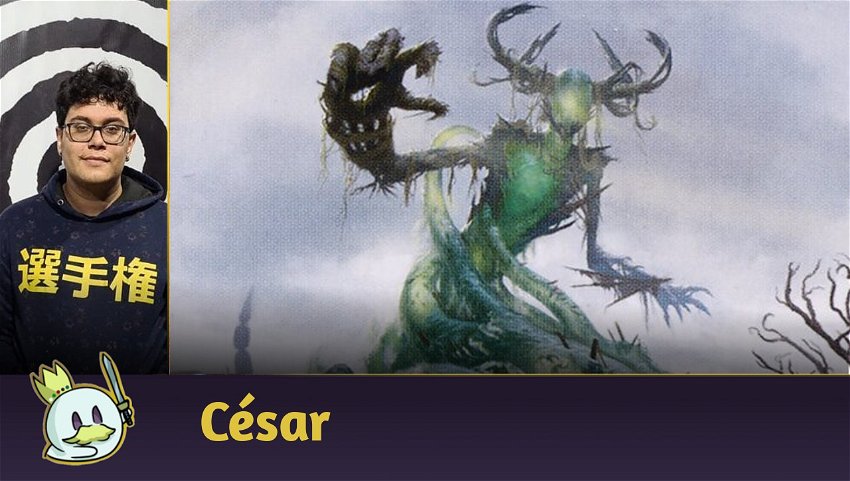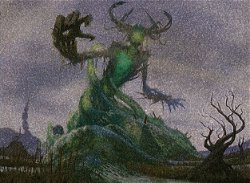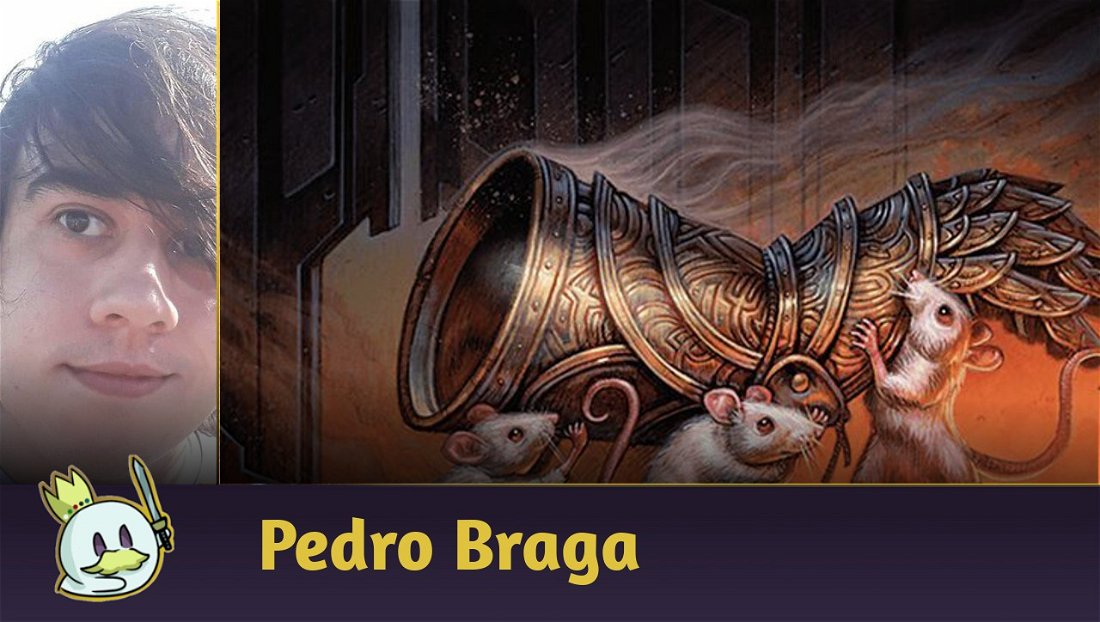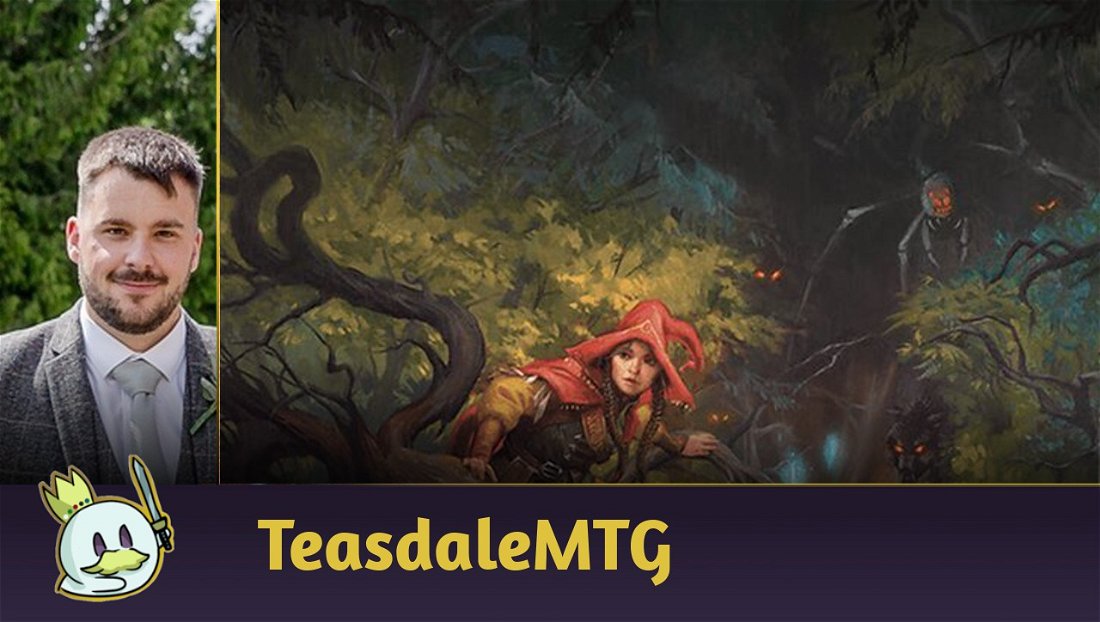Introduction
In this article, straight from Dominaria, we'll showcase Muldrotha, the Gravetide in a Sultai 


The synergy of milling with Gyruda allows it to, even when it is removed, to be used again, thanks to Muldrotha and also thanks to other resources we have in the deck. Let's go!
Companion Condition
Gyruda, Doom of Depths limits us to only use even-cost cards. It is the total opposite of Obosh, the Preypiercer, which only allows odd-cost cards. The fact we can only use even-cost cards is a bit better than odd-cost cards, because it is possible to play more cards early on. Even though Sol Ring isn't an option, we have access to the classic rocks Arcane Signet, Fellwar Stone and Mind Stone, which work really well with the commander we've chosen.

Alongside Muldrotha, the Gravetide, this deck counts with several clones and recursions which can be reused thanks to the Reanimate theme. The win conditions vary between milling opponents as much as possible, taking away their resources, and combat damage.
Key Mechanic: Reanimate
Muldrotha provides us with access to several cards which can be "recycled", such as the aforementioned Mind Stone or Zagoth Triome, for instance. We'll show other cards in their respective sections, but the base principle is quite simple - keeping the commander on board for as long as possible, to reuse what will eventually be removed. For obvious reasons, your opponents will precisely try to remove Muldrotha instead of removing other permanents, but, for that, we have a few answers.
Muldrotha + Gyruda List and Deck Strategy
Muldrotha, The Gravetide allows us to cast a permanent spell of each permanent type during your turn. That means it isn't a bad idea to use Gyruda, Doom of Depths considering its mill effect. And, as stated previously, that also works to take away your opponent's resources (if they aren't playing a deck with a similar mechanic to yours or a deck that uses the graveyard as a recursion tool in some way).
This deck primarily wins through combat damage using creatures big enough to finish, and others that guarantee that your damage will hit, at the same time they also harm the opponent's strategy. We also have a card which guarantees a possible finishing move that will be shown later on.
Ramp
Spells

We use the classic 2-cost ramp cards: Rampant Growth, Farseek, Three Visits and Nature's Lore. The latter three in particular can search for Zagoth Triome, Breeding Pool and Overgrown Tomb.
Tempt with Discovery is used both to rearrange your mana base with a possible Yavimaya, Cradle of Growth, and also, mostly, to look for Cabal Coffers and Urborg, Tomb of Yawgmoth. Other situational options are Bojuka Bog, High Market or even Reliquary Tower.
Permanents

We have as artifacts that accelerate the game Arcane Signet, Fellwar Stone and Mind Stone, which were mentioned previously. As for creatures, the famous mana dorks this time are Inga and Esika, Paradise Druid and Rootcoil Creeper. I'd like to highlight this last one, as it can create 2 mana to use with spells cast from the graveyard, which works really well with our commander.
Inga and Esika also stands out, because, aside from granting Vigilance to your creatures, it can also be a possible source of card draw. Similar to it, we also use Elven Chorus, the format's latest favorite staple.

As for other creatures which aren't necessarily mana dorks, but help just the same, are Sakura-Tribe Elder, Solemn Simulacrum, Voyaging Satyr, World Shaper and Goreclaw, Terror of Qal Sisma. The two first cards mentioned ramp well, but Solemn Simulacrum is one of the main ones, as it is a versatile blocker which will provide you with a card draw.
Voyaging Satyr has an interesting interaction with Cabal Coffers, creating a lot of mana as recursion.

Not necessarily creating mana, but serving as a discount, Goreclaw, Terror of Qal Sisma discounts the cost of not only the commander and the companion, but also the cost of other creatures which will be shown later on. Not to mention its evasion granting Trample to all your other creatures. World Shaper has the goal of recovering any lands which were "lost" due to Gyruda's mill.
And, to finish, we have Aesi, Tyrant of Gyre Strait. It is an accelerator, somewhat: as much as it allows you to play an extra land per turn, it forces you to have lands in your hand to play in the first place. Even with this "drawback", it is still a great creature, as its ability to draw cards is considerably strong due to the abundance of ramp cards we use. You'll always prefer to play Fabled Passage alongside Aesi, for instance.
Creatures
Clones and Blinks

Almost the main mechanic of this deck, this sub-theme works in a simple way: copying Gyruda as many times as you can to Reanimate even more cards. A Gyruda deck usually does this already, so in this build we opted not to use as many clones and blinks, to make the deck "stand out" from previous versions.
As clones, we have Callidus Assassin, Evil Twin, Phyrexian Metamorph, Undercover Operative, Progenitor Mimic and Spark Double. It is important to highlight these last two ones, as Spark Double opens up the possibility of having an army of Gyrudas as it removes the legendary rule from this card, making her the best target possible for other clone cards, even more if Progenitor Mimic is on board, possibly always creating a new Gyruda.

For blinks, we have Deadeye Navigator and Thassa, Deep-Dwelling, and, also as a last resource, Hostage Taker. It's important to mention that, as much as this deck has a lot of synergy with Gyruda, it isn't 100% dependent on this companion. Even if the companion is exiled, because of a Path to Exile or even a Bojuka Bog, it isn't the end of the world. It is still possible to play as usual with everything we have in our build.
Evasions

The creatures chosen above are useful to guarantee your damage will go through somehow, such as Goreclaw, Terror of Qal Sisma with Trample.
To make our creatures Fly, we have Wonder and Archetype of Imagination, which besides granting Flying, remove Flying from your opponent's creatures. To match these two, we have Stormtide Leviathan, "holding off" like so your opponents' creatures, besides "helping" your mana curve in a way.

Archetype of Endurance doesn't guarantee evasion when it comes to combat damage, but it is really useful to defend our creatures with its ability. Lastly, we have Filth to use alongside Urborg, Tomb of Yawgmoth, making creatures unblockable thanks to the Swampwalk Filth grants you.
Big Threats

Massacre Wurm and Kogla, the Titan Ape are used as possible removals, obviously with the option of eventually being Reanimated with Muldrotha.
Sire of Stagnation and Vorinclex, Voice of Hunger have the same goal: disrupt your opponents as you get ahead. Sire of Stagnation can force your opponents to lose a land drop to not exile the top two cards in their decks, and also to not give you two card draws. Vorinclex locks down lands at the same time it gives you more of them, this way giving you more resources to play more spells per turn.

Other Utilities

Baleful Strix had to be on this list, after all, a Flying blocker which can kill basically anything it blocks and also give you card draw is so versatile that it can't be ignored, even more with Muldrotha on the command zone being able to bring it back, as an artifact, by the way - even allowing you to cast another creature from the graveyard. Ravenous Chupacabra is linear and direct: it is a removal which becomes a blocker later on.
Hoarding Broodlord comes in as we don't have access to Sidisi, Undead Vizier or Rune-Scarred Demon. Despite its high cost, it is important to highlight that it has Convoke, and also grants Convoke to whatever it searched, so it fits in well as a Flying body which also tutors something.

Eternal Witness unfortunately isn't here, so we use its sister: Timeless Witness. If at some point in the game it becomes impossible to use it with Muldrotha, its Eternalize ability is available to use as a last resource.
Finally, we have Sidisi, Brood Tyrant to help Gyruda: every time Gyruda's ability triggers, there is the possibility of creating a 2/2 Zombie with it.
Other Graveyard Recursion Tools

It would be a sin to not have Animate Dead in this list. Its versatility, which is already great usually, becomes even better with Muldrotha. Alongside this card we also have Stitch Together, Dread Return, Persist and Rise of the Witch-king. It is important we mention this last one, as it Reanimates any permanent if you fulfill its condition of sacrificing a creature. This allows you to return planeswalkers such as Tamiyo, Collector of Tales, for instance, and return Rise of the Witch-king again to your hand with Tamiyo's ability, which coincidently offers graveyard recursion as well.

Mythos of Brokkos is a card that can work well with Tamiyo, Collector of Tales or Timeless Witness: Mythos of Brokkos limits you to returning permanents only to your hand, but nothing is stopping you from playing one of these two cards into the graveyard and any other non-permanent you need to, and recover them later on.
Interactions and Answers
Counters and Removals

It is always nice to have answers as counters to avoid possible problems created by your opponents. So, we use the standard package: Counterspell, Arcane Denial and Drown in the Loch. This last one has great versatility, as it works both as a counter and as a removal.

Speaking of removals, we have Seal of Primordium, Binding the Old Gods, Assassin's Trophy and Extinction Event. These are removals which work well with our commander, as they are permanents; we have Assassin's Trophy to deal with any problematic permanent, and finally Extinction Event, which, if you choose the odd-cost choice, won't affect you negatively in any way. But eventually the board might be problematic enough to force you to choose the even-cost choice, so be prepared for that if that happens.
Card Draw and Miscellaneous

For defensive resources, we have the classic and even somewhat hated Cyclonic Rift and Heroic Intervention.
Cyclonic Rift, if resolved, can turn games around most times, so it is almost a must in this build. For resources which can be discarded into your graveyard, such as a few lands and some spells you've already used, such as ramp cards, we have Treasure Cruise and Dig Through Time to give us resources using what we don't need anymore thanks to Delve.

Fact or Fiction is almost always a win-win card, as the graveyard is an extension of our hand, so to speak. As this deck has big creatures, it makes sense to use Rishkar's Expertise in this build.
Teferi, Master of Time is also a great addition, not only because of its abilities, but also for the same reason as Fact or Fiction: losing cards to the graveyard isn't all that bad.
To finish this list and deck tech, as our possible finisher due to the abundance of mana we play because of Vorinclex, Voice of Hunger, Cabal Coffers and even Elven Chorus, we have Torment of Hailfire.

Alternative List: Gyruda, Doom of Depths
As said previously, this Gyruda-only build is more focused on clones than on recursion tools, unlike the one we built, with the goal of winning by milling your opponents.
Final Words
Sultai, particularly, is my favorite green color combination, so I really had fun when building this list. It was quite interesting to look for recursion tools which tremendously increased this deck's consistency without losing focus on the companion to fit them in a way that made sense.
There are just a few companions left, and "mastering" them by writing a deck tech for each one has been incredibly cool. It is quite interesting as a deckbuilder to stray away from the usual path of strong, powerful commanders which regularly appear on game tables across the world to favor a build which literally limits you.
Would you change anything? Use another card? Would you use Sidisi as a commander instead of Muldrotha? Share your thoughts!















— Comentarios 0
, Reacciones 1
Se el primero en comentar